Whale Watching in Thailand
I’ve spent plenty of time over the years on or around Bangkok’s Chao Phraya River, its banks lined with historic buildings, hotels, temples, and restaurants, its water a thoroughfare for commuting ferries and barge traffic. So much to explore and ideal for a sundowner at a bar. But I’d never been to its final destination, where it empties into the sea in the upper Gulf of Thailand. And I certainly never expected to find whales there.
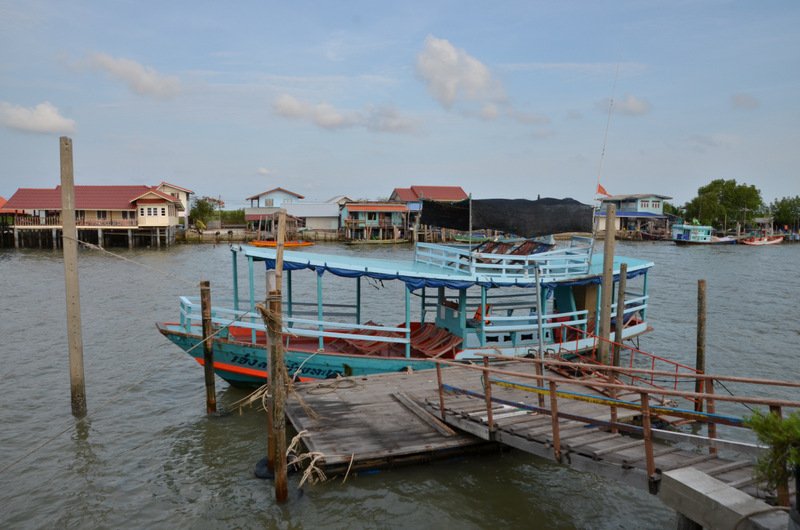
A group of five friends plus my wife and I had booked a private boat with Wild Encounter Thailand. After a 40-minute drive south from the city center to the very end of the river we went a short distance east from its mouth to one of the many klongs or canals that branch out from its banks. There we boarded a colorful wooden boat, an open-air affair for up to 12 passengers, with a small upper deck shading the length of the craft, which rode low to the water. Our guide Jirayu “Tour” Ekkul was joined by the boat captain Mr. Jeng and crew member and spotter, Mr. Noom.
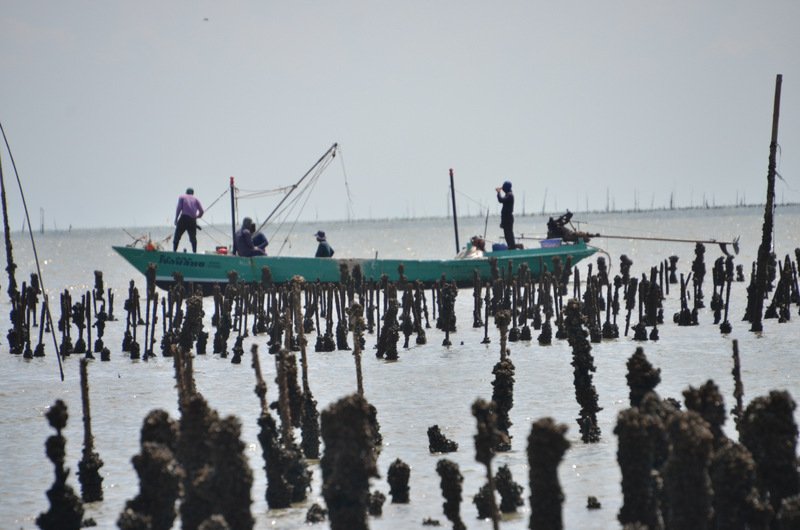
As we left the klong for open water, we passed thick rows of dark sticks, their tips just above the water. “Mussels,” Tour told us. They grow along the shafts and at low-tide the “farmers” come out in small boats, lower themselves into the shallow water and harvest the mussels from the poles into floating buckets they’d then dump into their boat. We continued straight out to sea past a small Thai salon rising up on pilings above the waves.
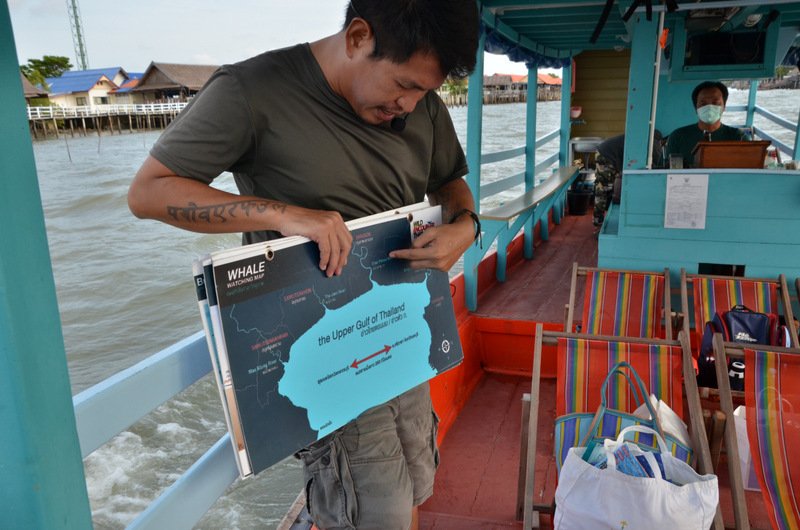
Tour gave a mini lecture with cue cards. The sea is shallow here, typically from 25-45 feet with deeper areas reaching 60-90 feet. The coastline is ideal for mangroves and the muddy bottom supports filter feeders such as crabs and mollusks. But the ultimate filter feeder in these parts was a mammal.
Bryde’s (BREW-duh’s) whale bears the name of Johan Bryde, a Norwegian ship owner and whaler around the turn of the 20th century, who first identified it and they are reliably spotted here. These are baleen whales, the toothless variety that send seawater through their natural sieve of stiff bristles to extract the smaller sea life such drifting crustaceans, squid, and small fish. The adults tipped the scales at about 30 tons and could be up to 45 feet long. Each year, pregnant whales come here to raise their calves. Each year Tour’s crew sees more activity. “This year we have seen four babies,” he told us.
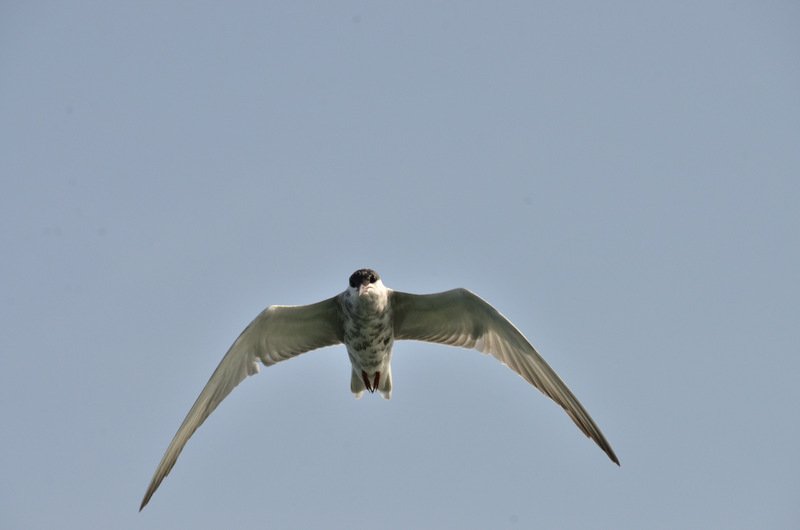
The boat plied waters thick with anchovies, and flying above our wake, excited terns kept pace, diving at the silvery flashes amid the churning foam buffet. Anchovy fishing crews worked the Gulf of Thailand, with about 80% of the catch going to nonhuman consumption such as chicken feed, for example. As we broke waves, an occasional panicking fish leapt into the boat and one of us would go to the rescue, likely feeding it back to a tern.
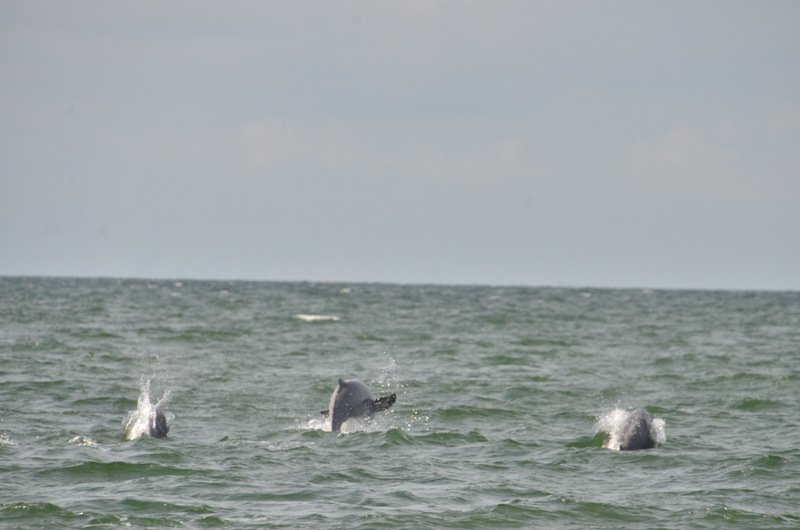
Within a half hour of departure a shout from Mr. Noom on the small upper deck had all of us on our feet. “Dolphins!” The boat slowed and altered course. Four or five at a time would roll up for a breath and back into the waves a couple hundred feet away moving away from us. Almost immediately others leapt from the water, and we realized we were pursuing more than we could definitively count. Captain Jeng estimated a pod of thirty. It had to be something so unusual because Tour allowed us to be sidetracked a few moments, and a friend who’d been on this trip before said he is typically quite adamant about staying after the whales. Not long after we continued farther out to sea, we saw our first spout and a long black body just broke the surface of the sea as the magnificent creature crossed before us at about 200 feet.
I’ve been out to see humpbacks before, admiring them typically at a distance, trying to get a quick photo of a dissipating spout, the curve of a back glistening in the sun for a moment, perhaps a tail rising out of the water as they dove. Bigger activity such as breaching always happened in the distance, mocking my medium-range telephoto lens.

But Bryde’s whale is a bit of a camera hog. First its rostrum, the snout, emerges slowly as if a whale had a nose there to take a sniff rather than the blowhole farther back on the top of its head. Then the whale rises, black and slender or, if one sees the underside, a distinct pink. When it is ready to feed it remains pointed to the sky and drops its lower jaw like opening a mailbox, so that it rests just along the surface of the water, the mouth filling with water and fish, many of which jump in of their own accord. When the whale senses enough of a serving, it sinks slowly into the sea, closing their mouths and disappearing with a catch to swallow whole.
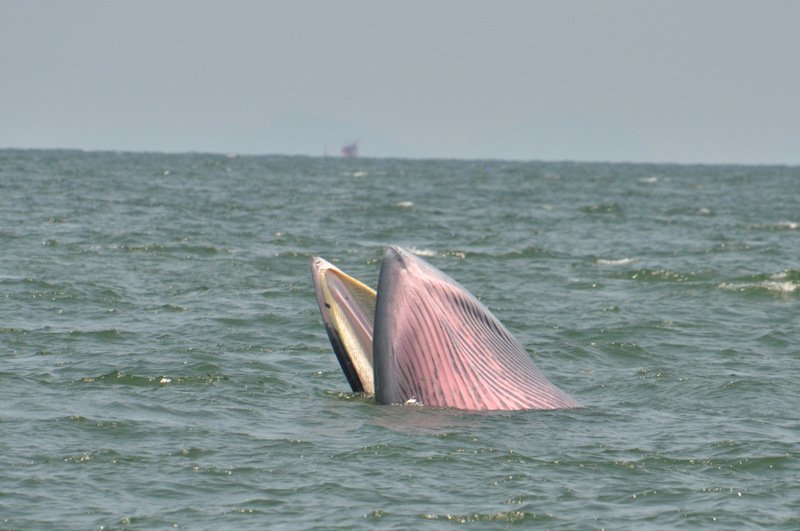
We witnessed this several times that day, initially firing out long bursts of camera shots until we realized how long they linger up in the air like that, and then took our time, savoring the view, admiring the skill of the hunter.
Tour is knowledgeable and the crew is adept at finding the whales and maneuvering to within a polite distance so as not to disturb them. (I’ve seen crews chase them every which way in other destinations.) The observations and photos they gather are shared with the Department of Marine and Coastal Resources (Endangered Species Unit & Research Center) and other scientific organizations. and while Tour is above all professional in his management, he’s as excited about the whales as any of us.

As began the turn back to port, again, we found whales. One rose into the air to feed and held there, while a smaller one nearby exhaled a modest plume. “This is Mae Kanya (“Mama September”) and this is her fifth calf,” Tour told us, pointing out distinguishing marks along her body. She is a grandmother, actually, and the first whale the crew had entered into their database when they started keeping records in September 2011. Tour smiled like a new father, “And this is the sixth calf we have seen this season! More than any other season.” Beyond them we could still see the Bangkok skyline, low to the horizon, blue in the distance. An incredible moment.
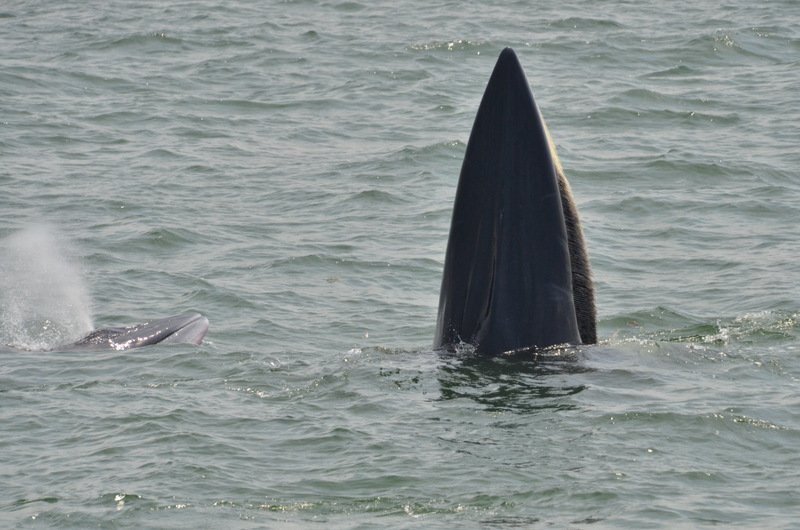
It took more than an hour to return to port, and the boat slowed a moment. Tour and Captain Jeng discussed something urgent, pointing to two orange flags fluttering on tall buoyed bamboo poles set far apart in the sea between us and the entrance to the klong. A fishing method called a longline was likely strung loosely between the flags and dangling shorter lines along its length with multiple hooks on each. Tour explained, “The fisherman use nets and we don’t know exactly where they are.” These can get caught in boat propellers and, even more alarming, they are known to have caught and drowned whales in the past. Longlines, crab traps, and lost or abandoned “ghost” nets may or may not be legal, depending on how they are categorized. Certain NGOs and authorities police it, but not always successfully. The captain gave the flag a wide berth and took us back to the dock. The growing interest in these whales would likely give conservationists some leverage against dangerous fishing methods, and maybe Mama September would one day be a great-grandmother.
________________________
Wild Encounter Thailand does private and mixed public tours, with boats that accommodate 12, 30, and 50 passengers. The smallest craft is the only one without air-con. Trips start at 8am and last 7 to 10 hours. The Wild Encounter Thailand web page is getting an overhaul currently, but the Facebook page works just fine and the admin staff know English.
Office number: +66-92-845-9444 or +66-83-375-9696
Use LINE app to chat using these mobile numbers as well.
Email: jirayu.wildencounter@gmail.com (or) brydeiedeni@gmail.com


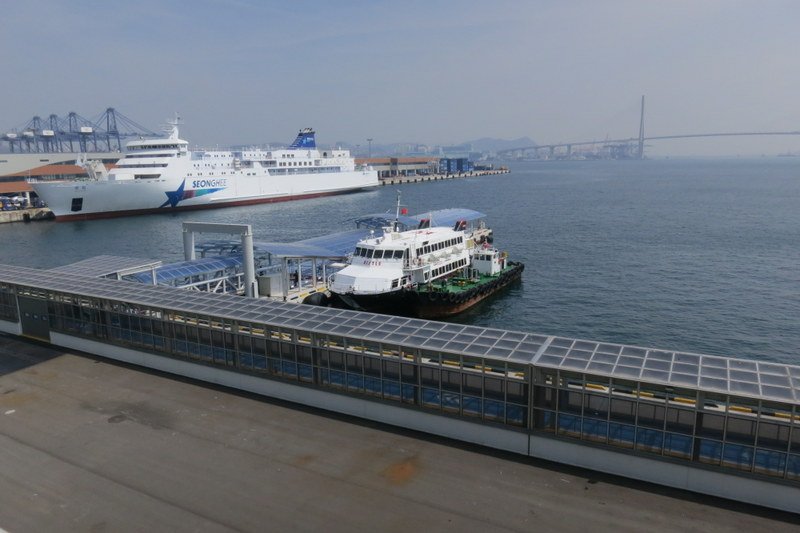



 ORDER YOUR COPY TODAY!
ORDER YOUR COPY TODAY! ORDER YOUR COPY TODAY!
ORDER YOUR COPY TODAY!
Wow, that sounds like such a relaxing and amazing experience! It just reminded me of the time I saw pink dolphins. I couldn’t believe they were real until I witnessed them myself. I decided to see these fascinating creatures for myself during my trip to Thailand. It was a truly astonishing sight. I took an afternoon tour and got to see other attractions too, like the Pancake Rock, beach pigs in Khanom Pig Island, Pumpuang Stage, and even visited Koh Nui, also known as Buddha Island. There are free shuttles available from both Don Sak Ferry Terminals, SEATRANS, and RAJA ferries. I highly recommend checking it out on Pink Dolphin Tours’ website. I guarantee you won’t regret it!